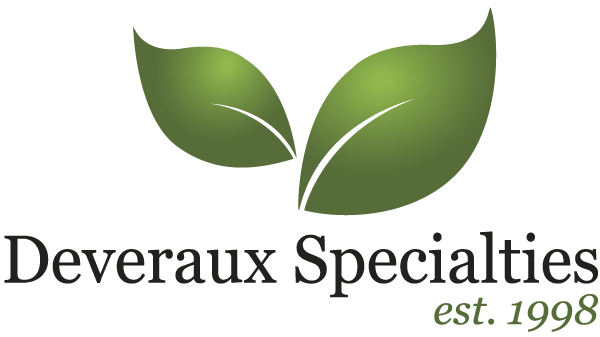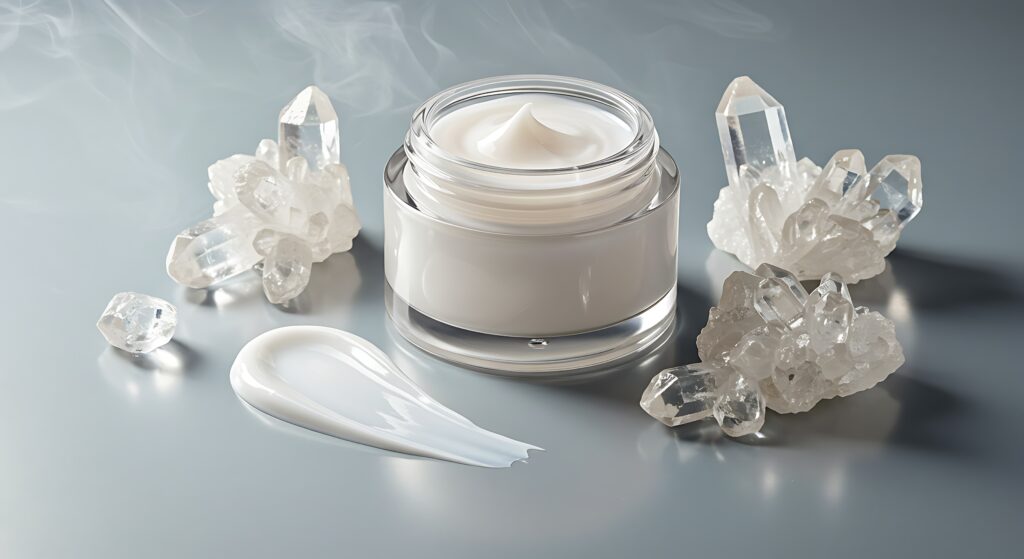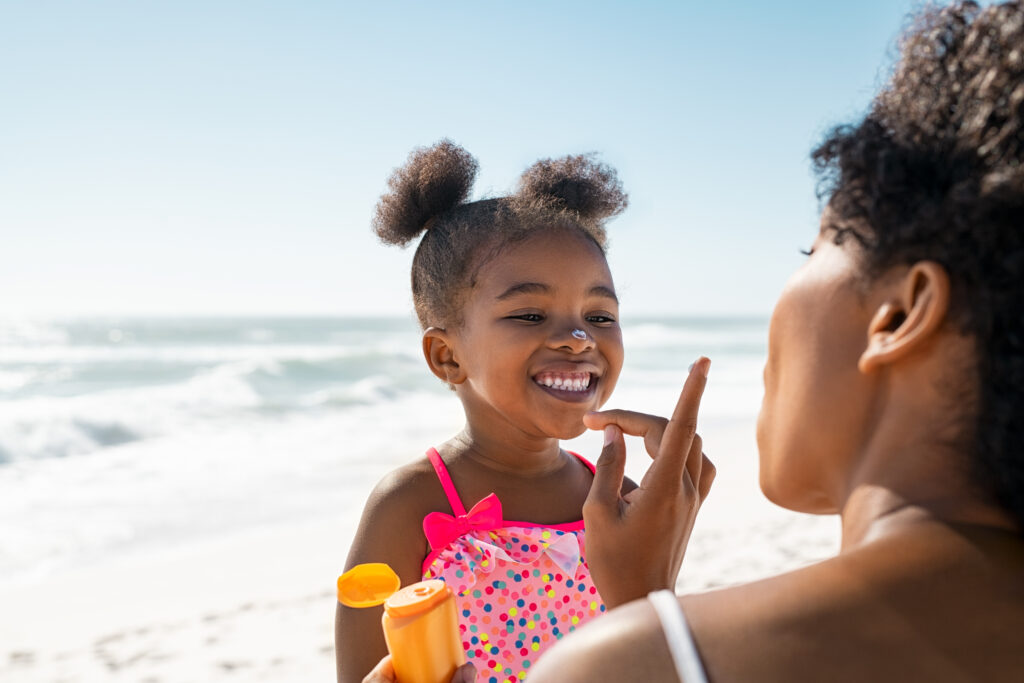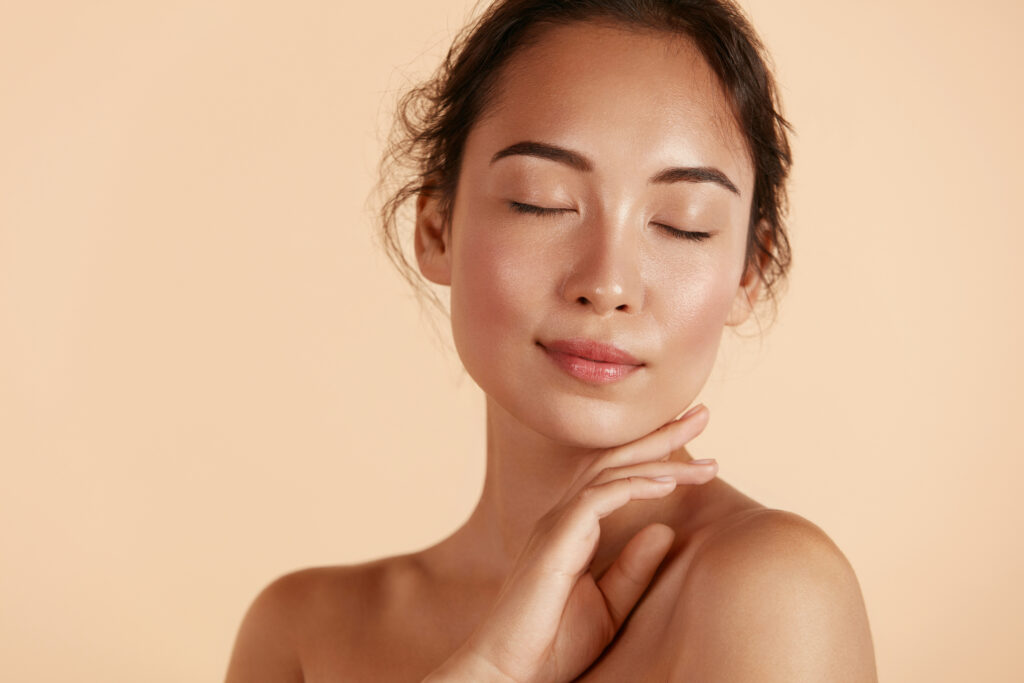Same Claim, Different Exposure Problems
“Microbiome-friendly” reads as a single claim, but it covers two fundamentally different exposure scenarios. A cleanser touches skin for ~30 seconds and is rinsed; a serum or cream stays for hours. Time on skin, the solvent system, deposition, and how ingredients partition in the stratum corneum all change the biological question you’re asking the resident microbes to answer. Treating rinse-off and leave-on as interchangeable often leads to products that clear a lab screen yet underperform on people.
Two bodies of evidence shape a more precise approach. Longitudinal metagenomic work shows that healthy skin communities are remarkably stable over months, so most product effects are expected to be subtle and time-dependent rather than dramatic. That argues for format-appropriate measurement. At the same time, clinical and review literature reminds us that poorly designed surfactant systems can damage the barrier—a roundabout way to perturb the microbiome—while well-designed leave-ons can preserve composition across realistic use. In short: match the format to the right actives and the right endpoints.
Defining “Friendly” for Rinse-Off vs. Leave-On
For rinse-off, the problem is the “flash” interaction. You need to lift makeup film, oxidized sebum, sunscreen residue, sweat salts, and particulates without extracting barrier lipids to the point that commensals lose their preferred habitat. Classic anionic systems can overshoot, especially at higher pH, increasing TEWL and irritation risk—indirect routes to community disturbance. A credible microbiome-friendly cleanser therefore starts with milder surface-active chemistry, tuned pH, and co-actives that hit sebum or odor targets without collapsing viability or barrier integrity during that brief window.
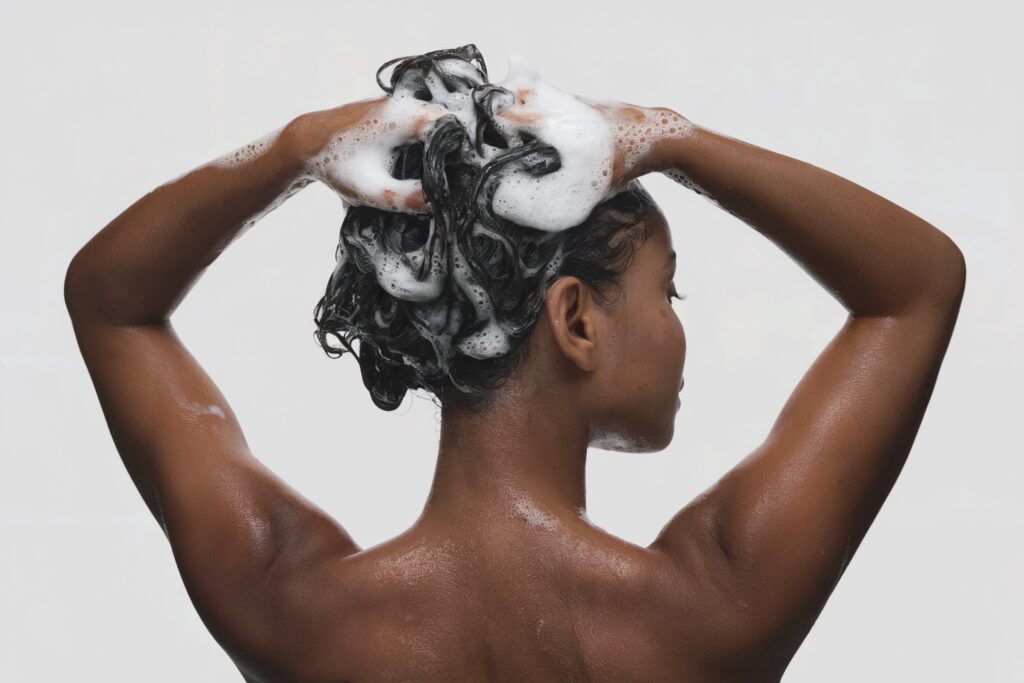
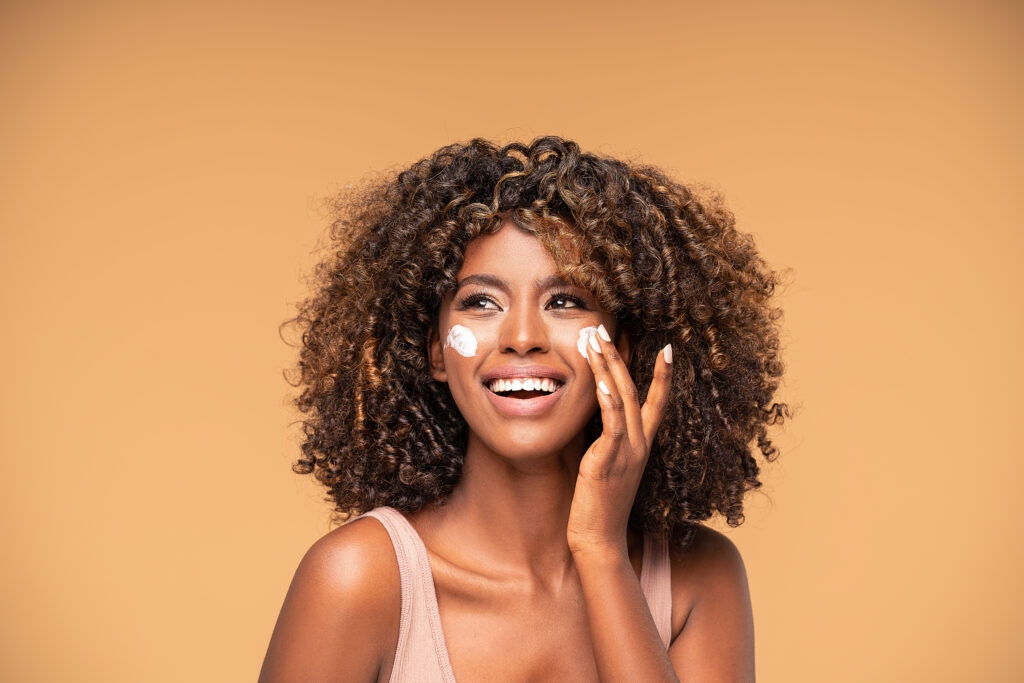
For leave-on, the exposure is cumulative. Hours-long residence increases the chance that solvents, film formers, and actives nudge commensals or their metabolites. Encouragingly, controlled human studies suggest well-designed leave-on products can maintain microbial diversity and composition, but “no impact” is not guaranteed. Leave-on design should either protect conditions commensals prefer (barrier function, near-acidic pH, balanced sebum), balance through pre/postbiotics, or activate microflora-linked benefits in a targeted way. Measuring not just immediate but also cumulative and post-cessation effects is essential to avoid over- or under-claiming.
A Practical Framework: Protect, Balance, Activate—Plus Tools That Prove It
Givaudan Active Beauty operationalizes microbiome-savvy formulation through three pillars—Protect, Balance, and Activate—and two enabling tools:
The value is straightforward: use i-MAPS to target, formulate by pillar and format, and verify with B-Biome’s time-resolved endpoints.
Format-Specific, Pillar-Aligned Choices
🧼 Rinse-Off (lean on Protect, support with Balance):
In cleansing, choose surface-active systems and companions that minimize flash disturbance while achieving visible cleanliness and sebum control. Sopholiance® S (a sophorolipid biosurfactant) targets odor- and acne-associated bacteria and reduces sebum, making it a strong Protect anchor for face cleansers and body washes. Its performance allows formulators to meet shine-control targets without the harshness typical of purely anionic systems. Mangixyl™, a microbiome-friendly oily-skin ingredient crafted from mango leaves, adds a leave-behind sebum-balancing effect that pairs well with mild cleansers or micellar waters—helpful wherever quick oil re-accumulation undermines a “fresh” feel. For scalp cleansers, Patchoul’Up™ (upcycled patchouli leaf fraction) helps normalize the scalp microbiome and reduce dry flakes, while DandErase™ brings rapid anti-dandruff efficacy that rivals leading benchmarks—useful when you need visible flake reduction without compromising long-term balance.
🧴 Leave-On (leverage Balance and Activate, with Protect where barrier support is needed):
For tone and radiance, Brightenyl® is microflora-activated in the stratum microbium™—a textbook Activate choice for serums targeting unevenness. Illuminyl™ 388 adds a complementary, prebiotic-brightening route built by biocatalysis from EGCG, widening tone-evening options across skin types. B-Lightyl™ addresses hyperpigmented spots while tempering inflammation—useful where post-inflammatory hyperpigmentation and micro-inflammation intersect.
For renewal and visible well-aging with microbiome respect, Revivyl™ accelerates skin renewal while protecting microflora and barrier function; Vetivyne™—a vetiver-root fraction—boosts youthful features while preserving Actinobacteria abundance, helping avoid dysbiosis during anti-aging regimens; Agefinity™ supports mitochondrial energy and DEJ integrity for structural resilience over time. Together, they cover Protect/Activate needs without over-engineering the INCI.
For sensitive or reactive phenotypes, Yogurtene® Balance (a yogurt-inspired prebiotic concept) helps restore microbial balance; Sensityl™, a microalgae-derived soothing active, improves comfort with documented mood-linked benefits—relevant when low-grade inflammation is part of the user story; Masknyl™, designed for mask-induced redness and hyperpigmentation, brings an Activate path that addresses both color and comfort. Night care can make strategic use of Synchronight™, a microbiome-activated melatonin protector for circadian-aligned renewal.
Finally, for a novel angle on the interface between microbes and ageing, Evernityl™ targets Porphyr’ageing™—the impact of microbiota-derived porphyrins on visible ageing—offering a mechanistically distinct Activate lever for global anti-ageing serums. For scalp leave-ons, pair Patchoul’Up™ tonics with DandErase™ treatments to maintain comfort and reduce flakes beyond wash day.
Measure What the Format Demands
Rinse-Off: Prioritize B-Biome’s flash endpoint. A cleanser that removes soils effectively while earning a favorable flash score is less likely to induce short-term viability loss. Formulation levers include surfactant selection (e.g., sophorolipids), micelle size and counter-ion tuning, polymeric thickeners that reduce free monomer, and pH near the skin’s natural range. In practice, Sopholiance® S provides detergency plus sebum control at milder conditions, and pairing it with Mangixyl™ or Yogurtene® Balance helps preserve the post-wash environment that commensals prefer. For scalp, Patchoul’Up™ and DandErase™ allow wash routines that minimize rebound flaking and itching while normalizing the microbiome over time.
Leave-On: Emphasize cumulative and resilience endpoints. A leave-on that shows low cumulative disturbance and high resilience supports claims that it “respects the microbiota during daily use.” The underpinning of B-Biome’s short-term viability scoring has been described in a peer-reviewed method paper, providing a common language for R&D and claims. Within that framework, Brightenyl® and Illuminyl™ 388 can deliver tone benefits without broad community disruption; Revivyl™, Vetivyne™, and Agefinity™ address renewal and structure; Sensityl™ and Yogurtene® Balance keep reactivity in check; Synchronight™ lines up with night repair cycles; Masknyl™ addresses mask-linked redness and hyperpigmentation; Evernityl™ uniquely targets porphyrin-related ageing mechanisms. Combined with i-MAPS phenotyping, you can tailor these to oily, reactive, or hyperpigmented cohorts from the start.
Credibility, Efficiency, Differentiation
Microbiome claims are no longer novel; they’re table stakes. What separates strong programs is fit-for-format design and transparent substantiation. The Protect–Balance–Activate pillars give you a mechanism-first vocabulary; i-MAPS ensures you’re solving the right problem for the right phenotype; and the B-Biome™ Score translates immediate, cumulative, and resilience effects into an accessible label. That progression—target, design, prove—creates claims that withstand scrutiny from regulatory, brand partners, and scientifically literate consumers.
There’s also a development efficiency benefit. When rinse-off and leave-on are engineered to different biological endpoints from day one, you reduce reformulation cycles and accelerate alignment between R&D and marketing. And because the portfolio spans all three pillars—you can architect families of products that feel cohesive yet are biologically precise across formats.
The Takeaway: Protect, Balance, Activate—Then Prove It
Rinse-off and leave-on aren’t two versions of the same microbiome problem; they are different exposure profiles that demand different design and verification strategies. With Givaudan Active Beauty’s Protect–Balance–Activate pillars, i-MAPS phenotyping, and the B-Biome™ Score’s time-resolved endpoints, formulators can create cleansers that clean without collateral damage and leave-ons that deliver visible benefits while respecting resident communities—backed by methods that stakeholders can see and understand.
From Phenotype to Prototype
If you’re planning a microbiome-friendly cleanser–serum duo, a scalp care system, or a modernization of an existing line, we’ll help you translate this framework into prototypes and claims. Submit a request on our website or contact your dedicated Deveraux sales manager for pillar selection, formulation guidance, and B-Biome™/clinical pathways aligned to your brief.
Resources:
- Oh, J., Byrd, A. L., Park, M., NISC Comparative Sequencing Program, Kong, H. H., & Segre, J. A. (2016). Temporal Stability of the Human Skin Microbiome. Cell, 165(4), 854–866. https://doi.org/10.1016/j.cell.2016.04.008
- Diaz, Deanna & Ditre, Chérie. (2020). The effect of Cleansers on the Skin Microbiome. https://practicaldermatology.com/youngmd-connect/resident-resource-center/the-effect-of-cleansers-on-the-skin-microbiome/23269/
- Callejon, S., Giraud, F., Larue, F., Buisson, A., Mateos, L., Grare, L., Guyoux, A., Perrier, E., Ardiet, N., & Trompezinski, S. (2023). Impact of Leave-on Skin Care Products on the Preservation of Skin Microbiome: An Exploration of Ecobiological Approach. Clinical, cosmetic and investigational dermatology, 16, 2727–2735. https://doi.org/10.2147/CCID.S409583
- Robe, P., Jarrin, C., Zanchetta, C., Dupont, J., Chapuis, E., Scandolera, A., Auriol, D., & Reynaud, R. (2023). Rehabilitation of Skin Bacterial Counts to Assess the Short-Term Impact of Ingredients in Topical Applications—Presenting a Culture-Based Viability Score. Cosmetics, 10(2), 50. https://doi.org/10.3390/cosmetics10020050
